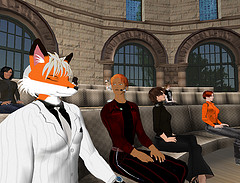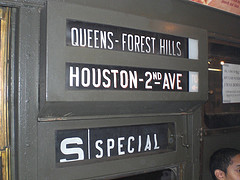October 25, 2009
Reconstruction time again
 This week the j-school was abuzz with the conversation successfully provoked by the publication of a detailed comprehensive report, complete with recommendations, on how to save the endangered species of professional journalists.
This week the j-school was abuzz with the conversation successfully provoked by the publication of a detailed comprehensive report, complete with recommendations, on how to save the endangered species of professional journalists.
One of the report’s two primary authors is my professor Michael Schudson, a thoughtful scholar and a great teacher who is eminently approachable for advice. My friend Dr. C.W. Anderson was the research assistant on the project, and I know he worked pretty hard to make this happen, though he didn’t go on a world tour with the authors.
The report was solid and it managed to gain alot of attention and stir up a bit of a ruckus. The recommendations seemed reasonable to me, though not quite as radical as I would have hoped…
I have been involved in quite a few conversations around the future of journalism this year, and while there has been a great deal of conversation around how the forms of organization around journalistic production are changing, there has been very little talk about how what’s being produced is changing too.
I am reminded of Bob Stein’s predictions about the Future of the Book. One of his central riffs is his epiphany that the digital book is much less about ebooks and multimedia, and much more about a shift away from the book as a static, finished, complete, object. He imagines a new emergent form in perpetual beta, with multiple authors, and around which revisions, annotations, and communities form. Any of his talks that from the last few years probably picks up on this theme.
While many journalists are talking about producing articles using new media forms, the discussions remind me a bit of the early days of cinema, when they used to film plays.
I’m imaging a shift in journalism towards interactive storytelling, cumulative aggregation, and distributed collaboration. We have begun to see hints of experiments along these lines in projects like Times Topics, Swiftapp, and Mapping Controversies, but this NPR project profiled last year in CJR really hits the mark: So Cool: How an economic weather map changed the climate. I think these strategies might easily apply to prose, not just data, interactive graphics, and maps.
Comparing journalism with education, will journalism only use new media to create the equivalent of a jazzed up, one-way, lecture? What does interactive story telling even look like? How will we teach the next generation of journalists to create works that are designed to be picked up, re-appropriated, and re-mixed?
With these ideas in mind, I would have loved to see some recommendations in this report designed in anticipation of this future, not merely to prop up yesterday’s decaying models. The patchwork of the future can be best supported by encouraging greater transparency, open licensing, and a culture of collaboration. What about encouraging open licensing mandates to this foundation support? Mandate the sharing of primary sources? Teach journalists of the future to share, and to learn from their readers? These aren’t all policy recommendations, but I think they need to be thought through and woven into this conversation.
PS – While the future of journalism may be difficult to discern, the future of newspaper suddenly seems pretty clear 😉
 Filed by jonah at 2:19 am under earth,epistemology,freeculture,water
Filed by jonah at 2:19 am under earth,epistemology,freeculture,water
 1 Comment
1 Comment





 It’s been a few weeks since I first
It’s been a few weeks since I first 

 Yesterday I took a ride on the the S train – not the shuttle, the special. The MTA conducted a
Yesterday I took a ride on the the S train – not the shuttle, the special. The MTA conducted a 